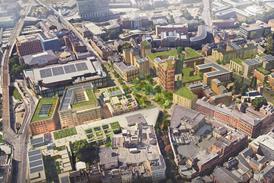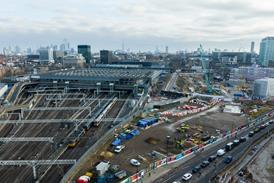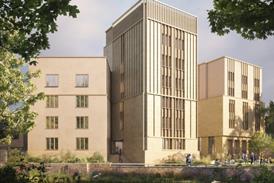22 Bishopsgate client thinks it ‘unlikely’ anything will be built at site planned for Fosters’ viewing platform
Veteran client Stuart Lipton has said all developers will have to take on board the Tulip planning inspector’s concerns about the amount of embodied carbon in proposals.
The man behind 22 Bishopsgate and the Broadgate Estate in the City of London said developers were already conscious of the need to make sure their buildings were sustainable.
“Everyone I know is talking about carbon-neutral buildings,” he said. “People are looking at lower-carbon steel, low-carbon concrete, lower-carbon facades. It’s the number one issue everyone is focusing on.”
The government rejected the Foster & Partners-designed Tulip this month on the advice of its planning inspector David Nicholson who cited its “highly unsustainable” use of concrete among his reasons. It is thought to be the first time carbon has been formally listed as a reason for rejecting a proposal, with many calling it a significant precedent.
Lipton also said he would be “surprised” if anything got built on the plot of land that had been earmarked for the Tulip, right next to the Gherkin.
Planning inspector David Nicholson, who was appointed after London mayor Sadiq Khan turned the scheme down and referred it to the secretary of state, said in his report there would be no incentive for other developers to buy the site since it was too small for a normal office tower.
Lipton said: “The inspector is pretty scathing about the building. If you go above 250/275m, you go into territory that is rarefied.”
The 305m tall tourist attraction would have been higher than the 278m-tall 22 Bishopsgate tower which was developed by Lipton Rogers, the firm Lipton set up with Peter Rogers, and designed by PLP. The 62-storey building is currently the tallest in the Square Mile.
Speaking about the design, he added: “It was OK. It was very bulky at the top and the bottom. It was a very functional building.”
Supporters of the scheme, which included the City of London Corporation, said the Tulip would have brought a different mix of visitors into London’s financial heartland, with tourists coming in at the weekends.
But Lipton said he believed the City would remain a commercial district primarily. “It’s a nice idea [but] making it into a tourist attraction is difficult. To transform it into something else suggests you begin to abandon its original purpose as a business district.”
The decision to pull the plug on the scheme has meant the Tulip’s developer Bury Street Properties, run by Brazilian billionaire banker Joseph Safra, is now having to rethink what to do next, with a final decision expected in the next couple of months.
The firm, which has until just before Christmas to ask for a judicial review into the decision, has not definitively pulled the plug on the plan with one source saying: “We have to reach out and find what is acceptable. We’re going to sit back and work very hard about what to do next [and see] how this plan can be made to work.”
>> Also read: Tulip carbon decision could change how big projects are assessed
>> Duncan Wilson: Tulip decision shows the new London Plan is working
Around 66% of the 1.3 million sq ft of space at 22 Bishopsgate has been let with close to 20 firms calling it home. A viewing gallery at level 58 of the building is set to open next spring.
Last week Landsec said it would spend £135m over the next nine years to decarbonise its portfolio including replacing gas-fired boilers with electric systems such as air source heat pumps.
















No comments yet